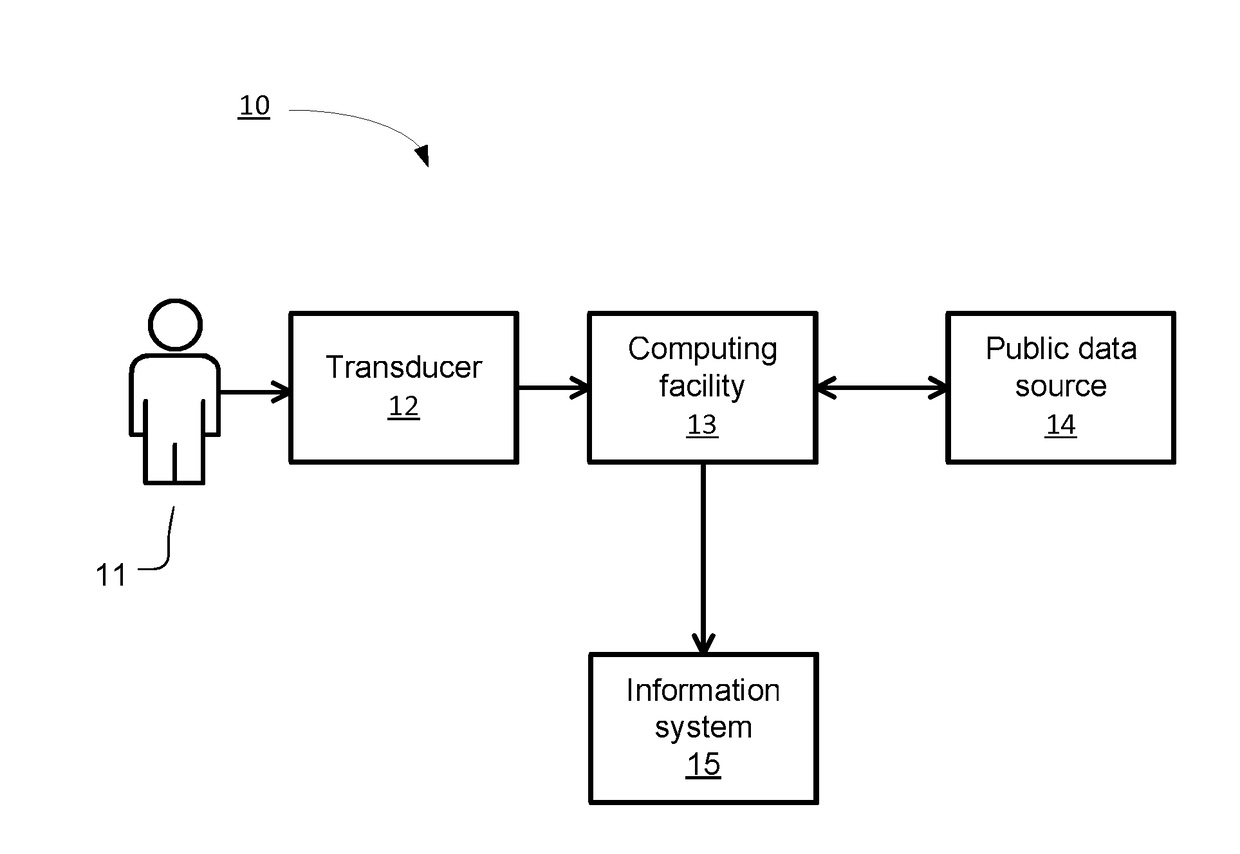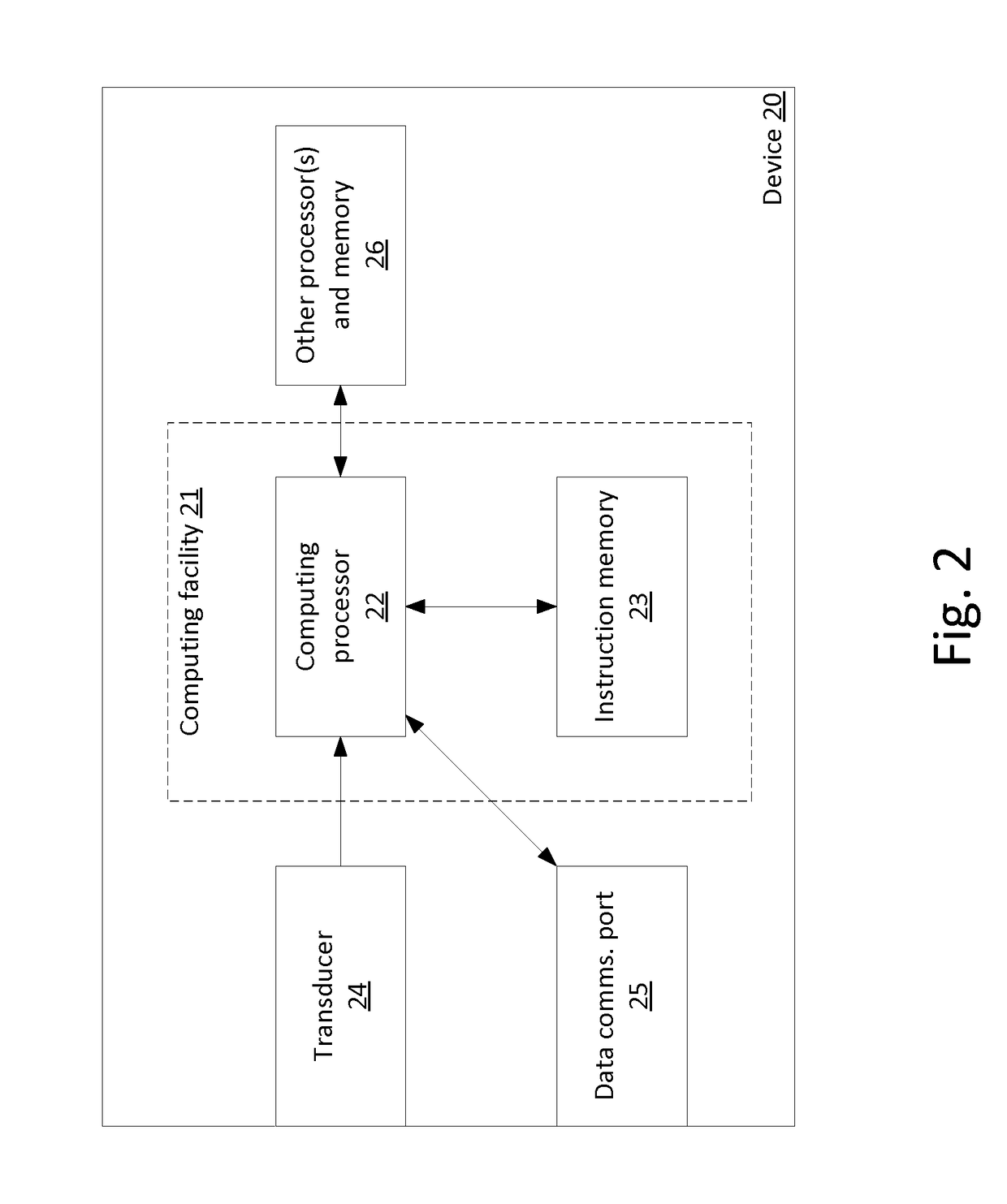Public/Private Key Biometric Authentication System
a biometric authentication and public key technology, applied in the field of security arrangements, can solve the problems of critical failure, single point of failure of database, and compromise of secure server,
- Summary
- Abstract
- Description
- Claims
- Application Information
AI Technical Summary
Benefits of technology
Problems solved by technology
Method used
Image
Examples
first embodiment
[0012]Thus, the invention is a device for using biometric data to authenticate a subject as an individual whose biometric data has been previously obtained using a first transducer, without the need for non-transient storage of the biometric data. The device includes a second transducer and a computing facility that is coupled to the second transducer. The computing facility has a computing processor and a non-transitory computer readable storage medium encoded with instructions that, when executed by the computing processor, establish certain processes for authentication.
[0013]A first such process is receiving by the computing facility, from the second transducer, a digital electronic signal that characterizes a biometric of the subject. A second such process is extracting by the computing facility, from the digital electronic signal, (a) a set of biometric values of the subject and (b), for each member of the set of biometric values of the subject, a confidence value indicating a ...
second embodiment
[0017]the invention is a computer-implemented method of using biometric data to authenticate a subject as an individual whose biometric data has been previously obtained using a first transducer, without the need for non-transient storage of the biometric data. The method includes receiving by a computing facility, from a second transducer coupled to the computing facility, a digital electronic signal that characterizes a biometric of the subject. The method next includes extracting by the computing facility, from the digital electronic signal, (a) a set of biometric values of the subject and (b), for each member of the set of biometric values of the subject, a confidence value indicating a degree of confidence that the corresponding biometric value is stable between characterizations. The method then includes using the confidence values to select, by the computing facility, a confident subset of the set of biometric values of the subject, the confident subset being a reliable discr...
third embodiment
[0021]the invention is a non-transitory computer readable storage medium encoded with instructions that, when executed by a computing facility, establish the above method and its variants.
PUM
 Login to View More
Login to View More Abstract
Description
Claims
Application Information
 Login to View More
Login to View More - R&D
- Intellectual Property
- Life Sciences
- Materials
- Tech Scout
- Unparalleled Data Quality
- Higher Quality Content
- 60% Fewer Hallucinations
Browse by: Latest US Patents, China's latest patents, Technical Efficacy Thesaurus, Application Domain, Technology Topic, Popular Technical Reports.
© 2025 PatSnap. All rights reserved.Legal|Privacy policy|Modern Slavery Act Transparency Statement|Sitemap|About US| Contact US: help@patsnap.com



